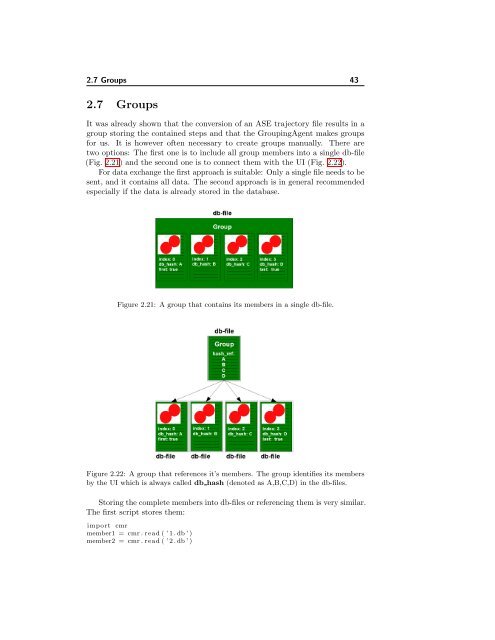The Computational Materials Repository
The Computational Materials Repository
The Computational Materials Repository
- No tags were found...
Create successful ePaper yourself
Turn your PDF publications into a flip-book with our unique Google optimized e-Paper software.
2.7 Groups 432.7 GroupsIt was already shown that the conversion of an ASE trajectory file results in agroup storing the contained steps and that the GroupingAgent makes groupsfor us. It is however often necessary to create groups manually. <strong>The</strong>re aretwo options: <strong>The</strong> first one is to include all group members into a single db-file(Fig. 2.21) and the second one is to connect them with the UI (Fig. 2.22).For data exchange the first approach is suitable: Only a single file needs to besent, and it contains all data. <strong>The</strong> second approach is in general recommendedespecially if the data is already stored in the database.Figure 2.21: A group that contains its members in a single db-file.Figure 2.22: A group that references it’s members. <strong>The</strong> group identifies its membersby the UI which is always called db hash (denoted as A,B,C,D) in the db-files.Storing the complete members into db-files or referencing them is very similar.<strong>The</strong> first script stores them:import cmrmember1 = cmr . read ( ’ 1 . db ’ )member2 = cmr . read ( ’ 2 . db ’ )












